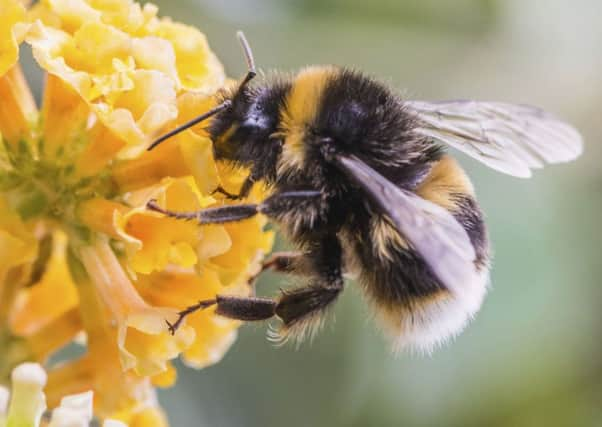Jim Jeffrey: Bees '“ and wasps '“ are in trouble but here's how to help


For many of us, the soundtrack to the warmer months is underpinned by the buzz of busy pollinators. But did you know they play a huge role in the success of Scotland’s food and farming industries?
Without pollination, we wouldn’t have the strawberries, tomatoes, or raspberries we all love. These popular crops all rely on pollination. If we lose the pollination services provided by insects such as bees and hoverflies, we risk damaging agricultural yields.
Advertisement
Hide AdAdvertisement
Hide AdPollination is also important for our enjoyment of the outdoors. Most of us like seeing these fascinating and colourful insects, and many of our favourite flowers rely on visits from insects to spread their pollen.
However, some pollinating insects are under threat. Climate change, pesticides, disease, and changes in land use which have led to losses of hedgerows and wildflower meadows are all contributing to declines in the number of pollinators and their range. READ MORE: Scottish Government plan to save bees and butterflies
Changes to and intensification of agricultural practices – such as using more fertilisers and herbicides, changing hay meadows to fields of one type of grass, and using fast-growing crop varieties – have resulted in the loss of habitats which pollinators depend on for food and breeding sites. Areas of heathland and grasslands have declined steadily throughout Scotland since the 1940s.
If we don’t reverse these trends, pollinator numbers will decrease dramatically. This will have serious implications, for both our food supply and ornamental gardens.
The Pollinator Strategy for Scotland was launched last year, setting out the actions we need to take to make our country a place where pollinators can thrive. It may surprise some, but we’re already making great strides in many of our cities.
For example, the work of Glasgow City Council at Pollok Park Nursery means that native wildflower meadows are now an integral part of Glasgow’s famous parks and gardens. In Edinburgh, projects such as ‘The Pollinator Pledge’ encourage people to make space for pollinators. The aim of the project is to create a network of habitats across the city by planting for pollinators and creating green spaces that help pollinators feed and shelter.
In Aberdeen, the stunning variety of wildflowers on the new bypass vies for attention with projects like BeeWatch – an online resource which helps people explore the plants favoured by different bumblebee species and offers advice on planting to encourage these popular insects.
Towns and rural areas are doing their part, too: in Greenock a local group called ‘Inverclydebuzz’ has sprung up to turn plots of under-used or derelict sites into wildlife gardens with lots of wildflowers and community involvement to offer vital food and shelter to our bees and butterflies, as well as make the local area more attractive. In East Dunbartonshire and Angus, roadside verges have been ablaze with wildflowers. And even on the busy A9 you might spot bee hotels between Pitlochry and Inverness designed for solitary bees.
Advertisement
Hide AdAdvertisement
Hide AdAnd we can all do our part at home. If you have a garden, why not plant some wildflowers? Or perhaps you could pop some into a window box? They’re beautiful to look at, and you’ll be encouraging these vital insects to thrive in Scotland and help our local food supply.
Throughout the country, individuals and groups are doing their bit to make Scotland more pollinator-friendly. The message is clear: it’s good to bee-friendly to our small but vital pollinating insects.
You can read the Pollinator Strategy for Scotland on the Scottish Natural Heritage website.
Jim Jeffrey is pollinator strategy manager at Scottish Natural Heritage